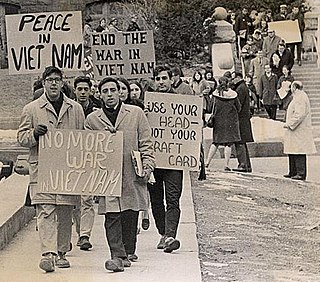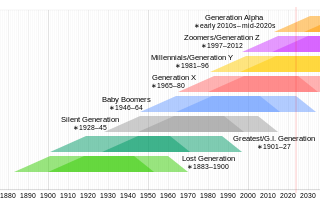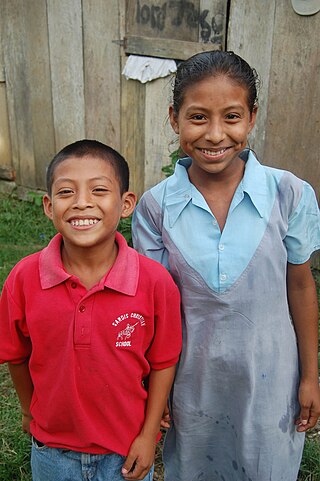
Spencer is a city in Oklahoma County, Oklahoma, United States, and a part of the Oklahoma City metropolitan area. The population was 3,978 at the 2020 census, a 1.7% increase from 2010.
A motion picture content rating system classifies films based on their suitability for audiences due to their treatment of issues such as sex, violence, or substance abuse, their use of profanity, or other matters typically deemed unsuitable for children or adolescents. Most countries have some form of rating system that issues determinations variously known as certifications, classifications, certificates, or ratings. Age recommendations, of either an advisory or restrictive capacity, are often applied in lieu of censorship; in some jurisdictions movie theaters may have a legal obligation to enforce restrictive ratings.

Youth culture refers to the societal norms of children, adolescents, and young adults. Specifically, it comprises the processes and symbolic systems that are shared by the youth and are distinct from those of adults in the community.
Young adult literature (YA) is typically written for readers aged 12 to 18 and includes most of the themes found in adult fiction, such as friendship, substance abuse, alcoholism, and sexuality. Stories that focus on the challenges of youth may be further categorized as social or coming-of-age novels.
Racial steering refers to the practice in which real estate brokers guide prospective home buyers towards or away from certain neighborhoods based on their race. The term is used in the context of de facto residential segregation in the United States, and is often divided into two broad classes of conduct:
- Advising customers to purchase homes in particular neighborhoods on the basis of race.
- Failing, on the basis of race, to show, or to inform buyers of homes that meet their specifications.

Youth participation is the active engagement of young people throughout their own communities. It is often used as a shorthand for youth participation in any many forms, including decision-making, sports, schools and any activity where young people are not historically engaged.

Generation Z, also known as Zoomers, is the demographic cohort succeeding Millennials and preceding Generation Alpha. Researchers and popular media use the mid-to-late 1990s as starting birth years and the early 2010s as ending birth years, with the generation generally being defined as people born from 1997 to 2012. Most members of Generation Z are the children of younger Baby Boomers or Generation X.

The sandwich generation is a group of middle-aged adults who care for both their aging parents and their own children. It is not a specific generation or cohort in the sense of the Greatest Generation or the Baby boomer generation, but a phenomenon that can affect anyone whose parents and children need support at the same time.

The role of the children in ancient Mayan civilization was first, and foremost, to help their elders. Once children turned five or six, they were expected to contribute to the family and community. They were treated as young adults and received more responsibilities as they grew older.

Segregation in Northern Ireland is a long-running issue in the political and social history of Northern Ireland. The segregation involves Northern Ireland's two main voting blocs—Irish nationalist/republicans and British unionist/loyalist. It is often seen as both a cause and effect of the "Troubles".

Many retirement issues for lesbian, gay, bisexual, transgender (LGBT) and intersex people are unique from their non-LGBTI counterparts and these populations often have to take extra steps addressing their employment, health, legal and housing concerns to ensure their needs are met. Throughout the United States, "2 million people age 50 and older identify as LGBT, and that number is expected to double by 2030", estimated in a study done by the Institute for Multigenerational Health at the University of Washington. In 1969, the Stonewall Riots marked the start of the modern gay rights movement and increasingly LGBTQ+ people have become more visible and accepted into mainstream cultures. LGBTQ+ elders and retirees are still considered a newer phenomenon creating challenges and opportunities as a range of aging issues are becoming more understood as those who live open lives redefine commonly held beliefs and as retirees newly come out of the closet.
Youth suicide is when a young person, generally categorized as someone below the legal age of majority, deliberately ends their own life. Rates of youth suicide and attempted youth suicide in Western societies and other countries are high. Youth suicide attempts are more common among girls, but adolescent males are the ones who usually carry out suicide. Suicide rates in youths have nearly tripled between the 1960s and 1980s. For example, in Australia suicide is second only to motor vehicle accidents as its leading cause of death for people aged 15 to 25.

Ageism is a bias against individuals and groups based on their age, which may take the form of discrimination at all levels against such individuals and groups, up to and including victimization and bullying. The term was coined in 1969 by Robert Neil Butler to describe discrimination against the elderly, patterned on the terminology of sexism and racism. Butler defined ageism as a combination of three connected elements: negative attitudes towards old age and the aging process, discriminatory practices against older people, and institutional practices and policies that perpetuate stereotypes about elderly people.

Screen time is the amount of time spent using a device with a screen such as a smartphone, computer, television, video game console, or a tablet. The concept is under significant research with related concepts in digital media use and mental health. Screen time is correlated with mental and physical harm in child development. The positive or negative health effects of screen time are influenced by levels and content of exposure. To prevent harmful exposure to screen time, some governments have placed regulations on its usage.
In linguistics, age-graded variation is differences in speech habits within a community that are associated with age. Age-grading occurs when individuals change their linguistic behavior throughout their lifetimes, but the community as a whole does not change.
Child work in indigenous American cultures covers child work, defined as the physical and mental contributions by children towards achieving a personal or communal goal, in Indigenous American societies. As a form of prosocial behavior, children's work is often a vital contribution towards community productivity and typically involves non-exploitative motivations for children's engagement in work activities. Activities can range from domestic household chores to participation in family and community endeavors. Inge Bolin notes that children's work can blur the boundaries between learning, play, and work in a form of productive interaction between children and adults. Such activities do not have to be mutually exclusive.
Child integration is the inclusion of children in a variety of mature daily activities of families and communities. This contrasts with, for example, age segregation; separating children into age-defined activities and institutions. Integrating children in the range of mature family and community activities gives equal value and responsibility to children as contributors and collaborators, and can be a way to help them learn. Children's integration provides a learning environment because children are able to observe and pitch in as they feel they can.

Sexual segregation in Saudi Arabia is a cultural practice and government policy which keeps Saudi wives, sisters and daughters away from contact with male strangers (non-mahram) and vice versa. However, since Mohammed bin Salman was appointed Crown Prince in 2017, a series of social reforms have been witnessed that created cultural changes, which included putting an end to the gender segregation enforcement. The Saudi gender segregation originated from an extreme concern for female purity and family honour. Social events used to be largely predicated on the separation of men and women; the mixing of non-related men and women at parties and other social gatherings were extremely rare and limited to some of the modern Western-educated families.

Youth in the Dominican Republic constitutes just over 30% of the total population. The Dominican Republic's population at roughly eleven million people has grown tremendously with the help of the youth population. In 1960, the youth population was at 3.3 million, and by 2008, it had reached 9.5 million, with two thirds of them in urban areas of the country.

No kid zones are places in South Korea that prohibit children from being on the premises. No kid zones may be enforced by public venues and private businesses. First becoming common in the early 2010s, no kid zones are commonly established to protect businesses from legal liability, but they may also be used to prevent children from disturbing adults. Places that are commonly designated as no kid zones include coffeehouses, restaurants, and movie theatres as well as national landmarks such as the National Library of Korea and the Korea National Arboretum. They are most common on Jeju Island.













